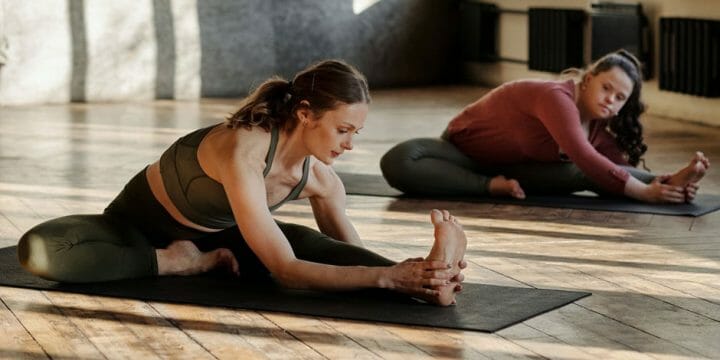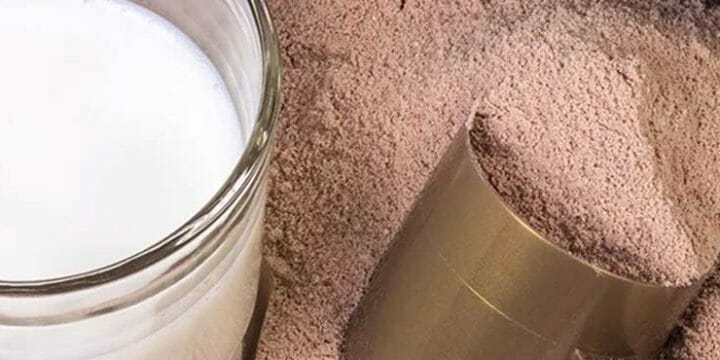In my years as a fitness trainer, I've noticed people often overlook small muscles like the TFL, focusing on the bigger ones.
From personal experience, I can't stress enough how vital it is to stretch the TFL for overall muscle balance.
In this article, I will outline some of the best stretches to combat TFL tightness and get you more flexibility and mobility.
Quick Summary
Best Stretches for the Tensor Fasciae Latae

The Tensor Fasciae Latae (TFL), a secondary hip flexor, is a thigh muscle nestled between the iliotibial band's layers, starting from the front of your hip bone.
Washington University states this muscle collaborates with the glutes for various hip movements and maintaining pelvic stability [1].
The tensor fasciae latae works with the gluteus maximus, gluteus medius, and gluteus minimus so you can perform a variety of hip movements like abduction, flexion, and hip internal rotation, and it provides pelvic stability while walking and standing.
It also assists in knee bending and rotation, per the National Library of Medicine [2].
To combat or prevent tightness, I often recommend these specific tensor fasciae latae stretches based on my practical experience:
Lying Abductor Stretch
This TFL stretch will also target the gluteus medius and gluteus minimus.
These are the steps:
- Sit with your legs extended.
- Turn your body to the right and brace yourself with your right hand, palm flat on the floor.
- Cross your left leg over your right leg, placing your left foot next to your right knee.
- Lean your hips into the right leg and hold for 30 seconds.
- Repeat 2-3 times before switching sides.
Cross-Over Kneeling Hip Flexor Stretch
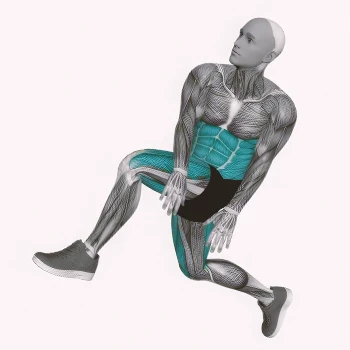
These are the steps:
- Stand with your feet hip-width apart.
- Lower into a lunge position until the thigh of your front leg is parallel to the floor.
- Lean forward and rotate toward your front leg.
- Hold this position for 30–60 seconds before switching sides.
- Repeat 2-3 times.
Iron Cross Stretch
This static stretch is simple yet effective in relieving a tight TFL.
These are the steps:
- To start, lie on your back with your body in a straight line and your arms out to your sides.
- Lift one leg over the other, planting your foot on the opposite side of your body.
- Keep your pelvis forward and lower toward the ground.
- Hold the stretch for 30–60 seconds.
- Switch sides
- Repeat each side 2-3 times.
Hip Circle Stretch
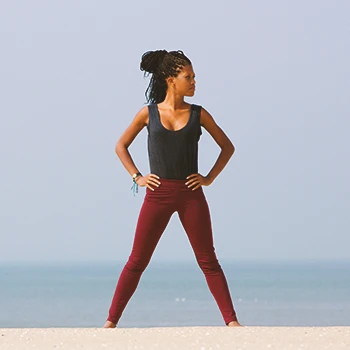
Along with the TFL and glutes, hip circles benefit the abs and assist lower back stretching.
These are the steps:
- Stand with your feet shoulder-width apart.
- With your knees bent just slightly, place your hands on your hips.
- Rotate your hips in full circles with a slow and controlled motion.
- Repeat ten times and switch directions for another ten.
- Complete 2-3 sets.
Standing Leg Cross Abductor Stretch
By crossing one leg over the other and leaning to the side, the Standing Leg Cross Abductor Stretch is a pre-workout that effectively stretches the TFL and the gluteus medius and minimus.
These are the steps:
- Begin this stretch by standing with your feet hip-width apart.
- Cross one leg behind you.
- Use a wall or chair for extra stability if needed.
- Lean your weight on your rear leg and drive your hips forward.
- Hold for 30–60 seconds.
- Switch sides and repeat.
- Stretch each side 2-3 times.
“By incorporating a stretching program into your daily routine, you can increase your flexibility and range of motion. Stretching can help prevent injury and decrease pain associated with muscle tightness.”
- Natasha Freutel, Occupational Therapist
Leaning Abductor Stretch
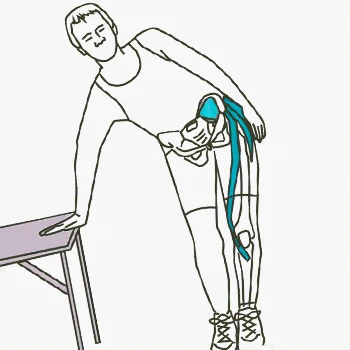
Position yourself next to a wall for this stretch.
These are the steps:
- Stand with your feet close together.
- Brace yourself by placing your hand on the wall.
- Slowly lean your weight toward your outer hip.
- Hold for 30–60 seconds before switching sides.
- Repeat 2-3 times.
Standing TFL Stretch
The standing TFL stretch is a static stretch that involves abduction and hip extension movement.
These are the steps:
- You begin this stretch by standing in a staggered stance with your right foot behind the left.
- Point the right foot outward while rotating your right hip to 45 degrees.
- Contract your glute muscles, pushing your weight forward until you feel a stretch.
- Reach up and across with your right arm.
- Hold for 30 seconds.
- Switch sides.
- Stretch each side 2-3 times.
Lying Leg Hanging Stretch
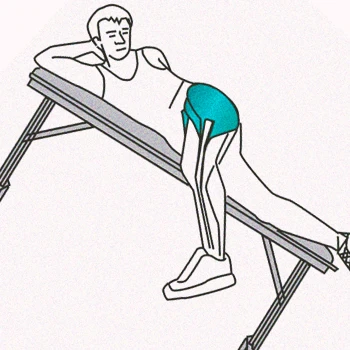
I've found the lying leg hang to be an effective stretch for TFL tightness, easily done on a bed or sturdy bench, as I often demonstrate to my clients.
These are the steps:
- Begin this stretch by lying on your left side and supporting your head with your left hand.
- Lower your right leg over the side of the bench, keeping it close to the bed without much hip flexion.
- Hold the position for 30–60 seconds.
- Switch sides
- Repeat 2-3 times.
Standing Balance Outer Hip Stretch
Another excellent standing TFL stretch can also help strengthen weak gluteal muscles, which helps prevent muscle imbalances.
These are the steps:
- Stand with your feet hip-width apart.
- Lift one leg and bend your knee.
- Hold your ankle.
- You can hold your ankle with one hand and grab a chair or counter with the other for extra stability.
- Slowly lean to the same side as your lifted leg.
- Hold the position for 30 seconds.
- Switch sides.
- Stretch each side 2-3 times.
TFL Foam Roll Stretch
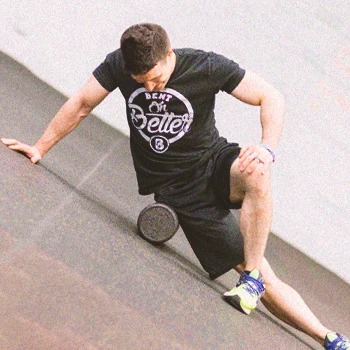
A cool-down exercise like mobilization with a foam roller can alleviate TFL pain, IT band syndrome, and post-workout muscle soreness. Give this a try.
These are the steps:
- Lie on the floor with a foam roller under your upper leg, just below the hip.
- You should have the leg resting on the foam roller extended.
- Your other leg should have its knee bent in front of you.
- Your two hands should be in front of you, with your palms on the floor as support.
- Push off with the foot of the top leg, keeping your arms straight.
- The foam roller should go from hip to knee on the extended leg.
- The pressure will vary depending on how much weight you push into the foam roller.
- You can shift your weight left or right to target the sore spot that needs attention the most.
Common TFL Problems

Though the TFL is a small muscle, it contributes to many movements and can quickly get overworked, resulting in tightness [3].
The Ober's and Thomas tests are straightforward home techniques to assess TFL tightness, using lateral leg and hip flexion movements to evaluate muscle flexibility and detect potential issues.
Some common TFL problems include:
- Tightness: A tight TFL muscle can cause pain or discomfort in the hip, thigh, and knee, limited hip mobility, decreased range of motion, poor posture, and an anterior pelvic tilt.
- Strain: Overuse or sudden movements like a twist or jump can cause a TFL strain, resulting in pain, tenderness, and swelling in the hip area.
- TFL Syndrome: Characterized by chronic pain in the hip, thigh, and knee, which movements like running and cycling can aggravate.
- TFL Trigger Points: These are tender, tight spots in the muscle that cause pain and discomfort and can cause referred hip, thigh, or knee pain.
Tightness is often a precursor to TFL pain, so quickly address it with a combination of stretching, foam rolling, and other therapeutic techniques like PT.
Besides overuse, other causes of TFL problems include sitting for extended periods, certain postures, standing with the weight shifted to one side, and weak hip flexors and abductors.
FAQs
What Causes Tight Tensor Fasciae Latae?
The most common cause of tight tensor fasciae latae is sitting for prolonged periods, which not only tilts your pelvis forward but also pulls on your thigh, resulting in femoral medial rotation.
How Do You Know the Tensor Fasciae Latae Is Tight?
Some ways you can tell the tensor fasciae latae is tight include hip pain that can travel to the knee joint, pain with hip movements, trouble walking quickly, IT band tightness, and difficulty laying on the affected side.
References:
- https://rad.washington.edu/muscle-atlas/tensor-fascia-lata/
- https://www.ncbi.nlm.nih.gov/books/NBK499870/
- https://www.physio-pedia.com/Tensor_Fascia_Lata
About The Author
You May Also Like
